Rebuilding Trust in a Time of Change: How Internal Communication Can Close the Gap
At VOICES 2025, Staffbase CEO Martin Böhringer explained why organizational trust is on the decline — and what companies can do to earn it back.

Trust is no longer a given
Let’s be honest: communication is harder than it used to be. For communicators, for leaders — for all of us.
The nonstop pace of change has left many people overwhelmed. And when people are overwhelmed, they tune out. They stop engaging. They stop trusting.
That breakdown of trust isn’t just personal — it’s institutional. The connection between companies and employees has frayed, making every message harder to land, and every change harder to lead.
I’ve been thinking a lot about this lately. During a recent visit to our new US office in Minneapolis, I met colleagues who had only ever seen me on-screen or through our internal communications. During a Q&A, one of them said, “How cool is that to see that our CEO is a normal human being.” That moment stayed with me, because while it was lighthearted, it revealed a deeper truth: my title wasn’t helping me connect; in fact, it was something I had to overcome.
And that’s the paradox of modern leadership. The more senior your title, the more skeptical your audience. That skepticism often lands on communicators, too — the ones helping those leaders connect, clarify, and inspire.
So how do you communicate when people don’t trust you — or your execs — by default?
The trust gap has never been wider

At VOICES last year, we spoke about polarization and the growing trust gap. That gap hasn’t closed. In fact, it’s widened.
The changes companies are facing right now are unprecedented: AI, mass layoffs, restructuring, return-to-office mandates, and global uncertainty. Annual enterprise change initiatives have increased by 400% in recent years.

And yet, while the need for change is at an all-time high, employee openness to change has hit a record low. Only 38% of employees say they’re open to change. Just 5% say they understand their company strategy.
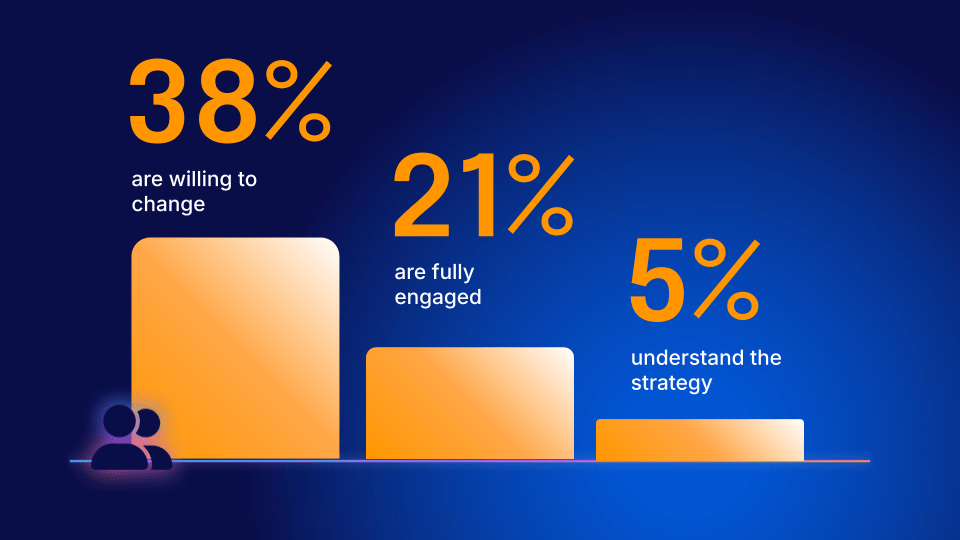
This is the challenge we must address: we’ve lost our license to be trusted. Especially for executives, trust is no longer given — it has to be earned. And that gap prevents us from doing what communication is supposed to do: engage, inspire, and align people in times of change.
And this isn’t just a people problem — it’s a business problem.
According to PwC, 93% of executives say building and maintaining trust improves the bottom line. That includes productivity, product quality, operational efficiency, and profitability.
Trust isn’t soft. It’s strategic.
What trust looks like in practice
Despite these challenges, we know that great internal communication can close the gap. We see it every day from our customers.
Alaska Airlines is one prime example. With over 30,000 employees across diverse roles and locations, they needed a way to drive global connectedness while empowering local culture and relevance.
When they launched their comms platform, Team AAG, they aimed for 50% adoption in year one. They reached 85% in just two months. A year later, 99% of employees were using the platform, and 75% were engaging weekly.
Their success is rooted in a strong internal brand and smart targeting: a three-tier strategy (corporate, division, local) that ensures content feels personal and actionable. They also empowered 145 local leaders to create content for their teams.
When we spoke to David Henrich, Alaska’s senior manager of communication operations, he emphasized the importance of local trust. Their approach isn’t just engaging — it’s credible.

And Alaska isn’t alone.
DHL supports a global network of more than 5000 decentralized communicators across 220 countries.
At Henry Schein, director of global internal comms Chris Munzing told us their most effective communicators are local leaders — the people employees see every day.
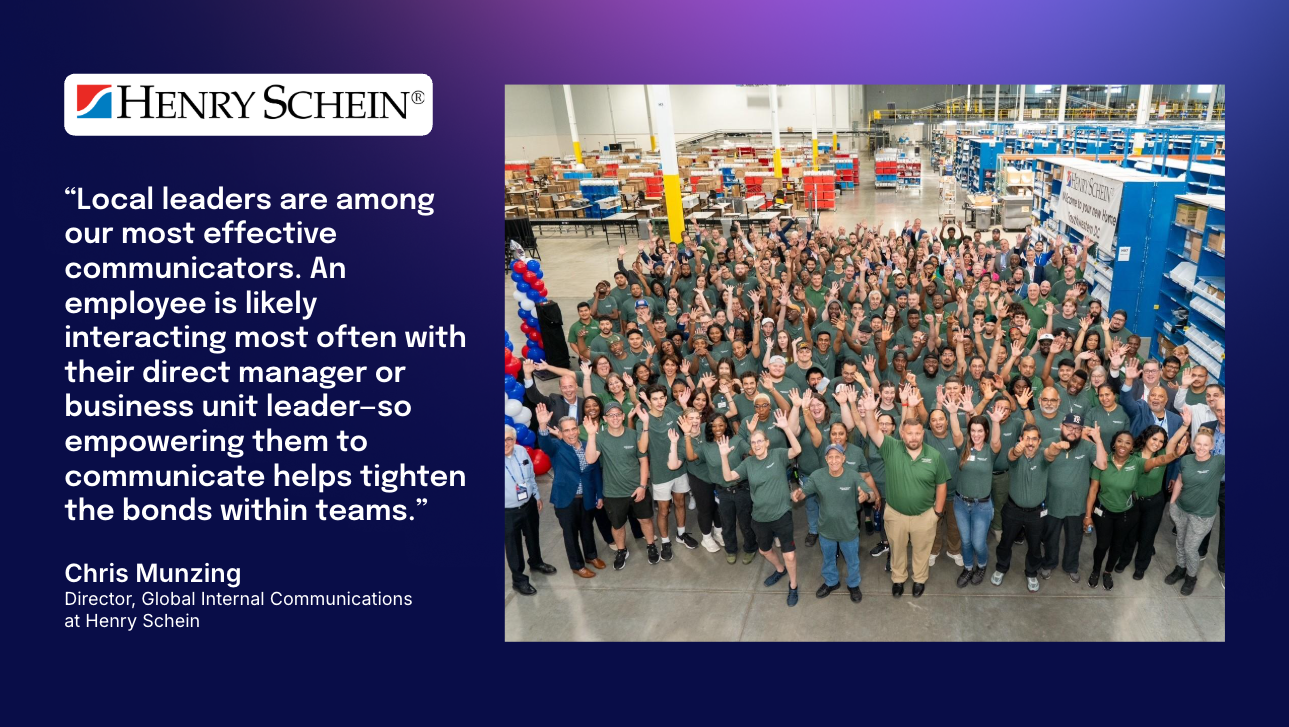
Two strategies that close the gap
Across these success stories, we see a clear pattern:
1. Build great channels
Think of your internal touchpoints like a brand. Just as you trust a favorite restaurant or news source you return to, employees come to trust channels that consistently deliver value.
2. Get closer to employees
Proximity matters. Employees trust the people they know. Local communication feels more relevant, more human — and ultimately, more trustworthy.
At Staffbase, we want to help you bring both strategies to life.
Making great channels even better
Let’s start with your most critical channel: email.
Our 2025 Employee Communication Impact Study shows that email remains the number one channel for leadership, change, and crisis communication. So we made it better.
The New Staffbase Email, launched in February, includes:
Best-in-class multilanguage functionality
Smart Impact analytics from Mission Control
Staffbase Companion AI to help craft sharper subject lines and preview text
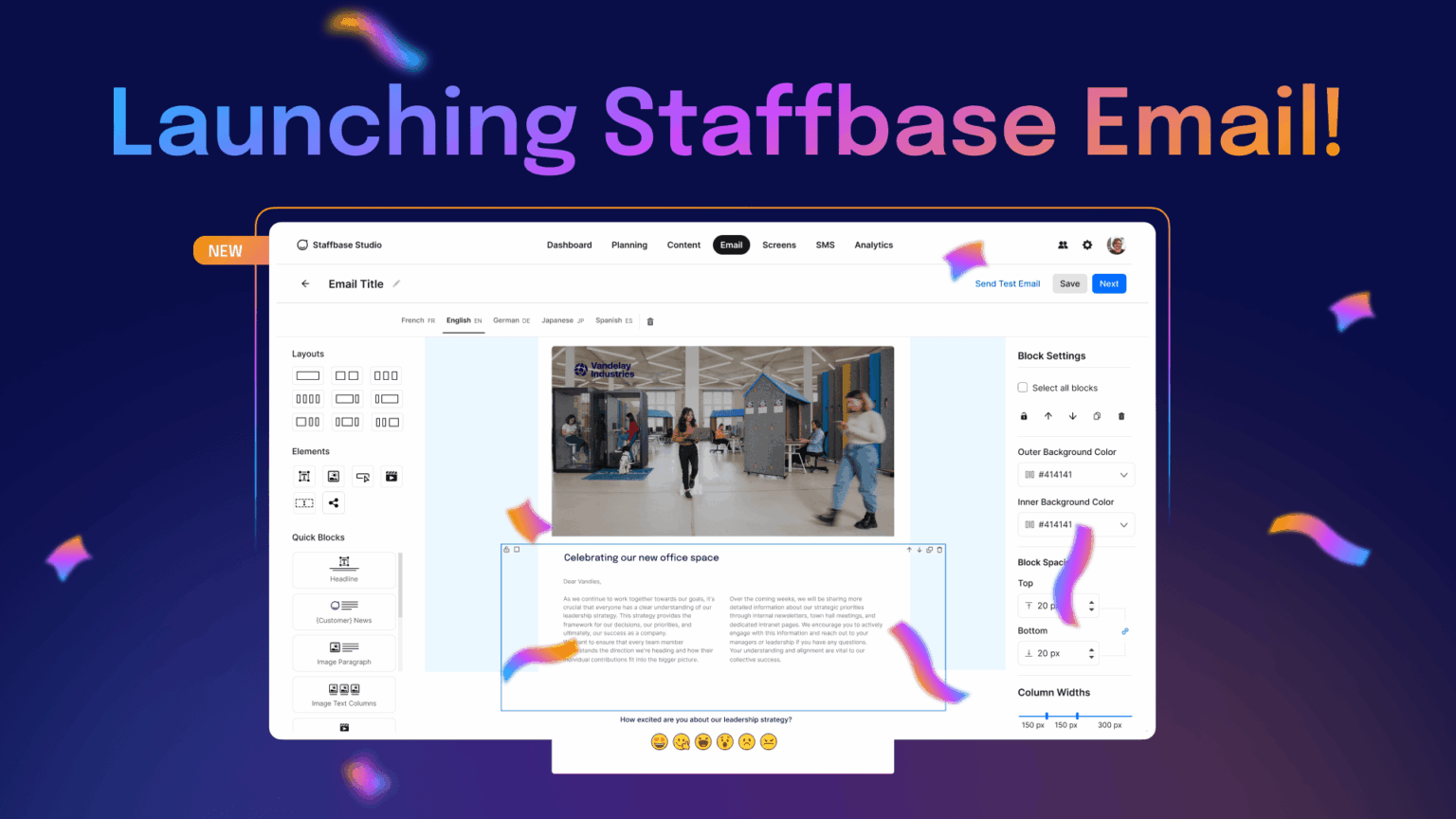
Your intranet: the digital front door
If email is the spark — the message that initiates connection — your intranet and app are the campfire: the daily gathering place for millions of employees using Staffbase worldwide.
We are bringing a completely new visual experience for Staffbase Intranet and App: modern layouts, floating navigation, and a design that feels intuitive and personal.
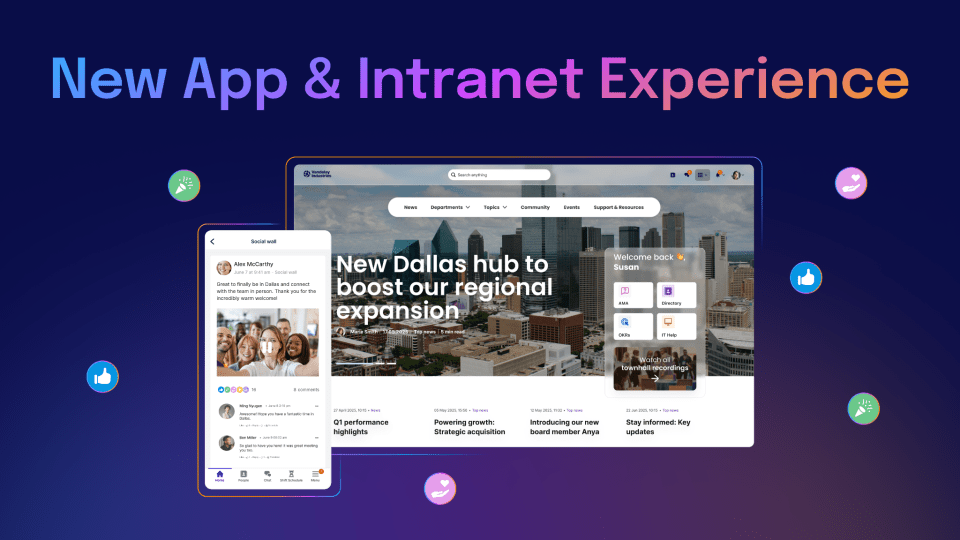
We’re also making it easier to bring services into the platform with strong out-of-the-box integrations with tools like SAP Success Factors, Workday, ADP, UKG, ServiceNow, and more.
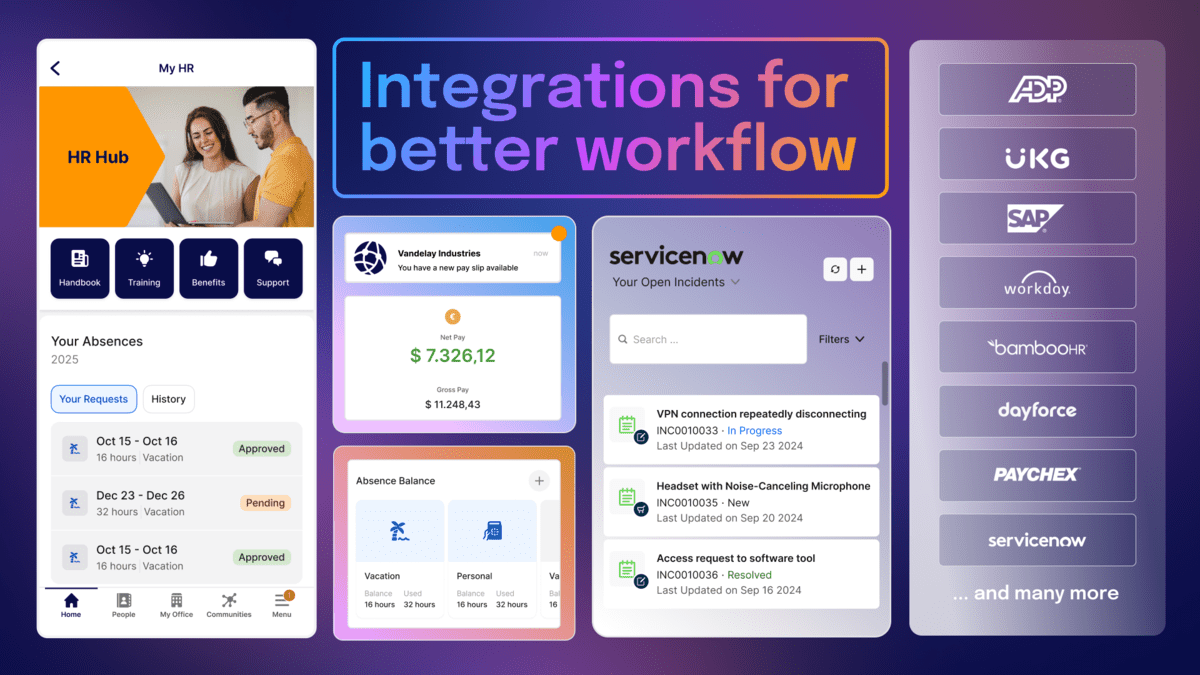
For your next town hall, we’re introducing Staffbase Town Halls: a fully integrated livestream experience, accessible directly within your Staffbase App and Intranet. You can use our out-of-the-box solution, powered by Kaltura, or embed your existing Microsoft Teams Town Halls solution.
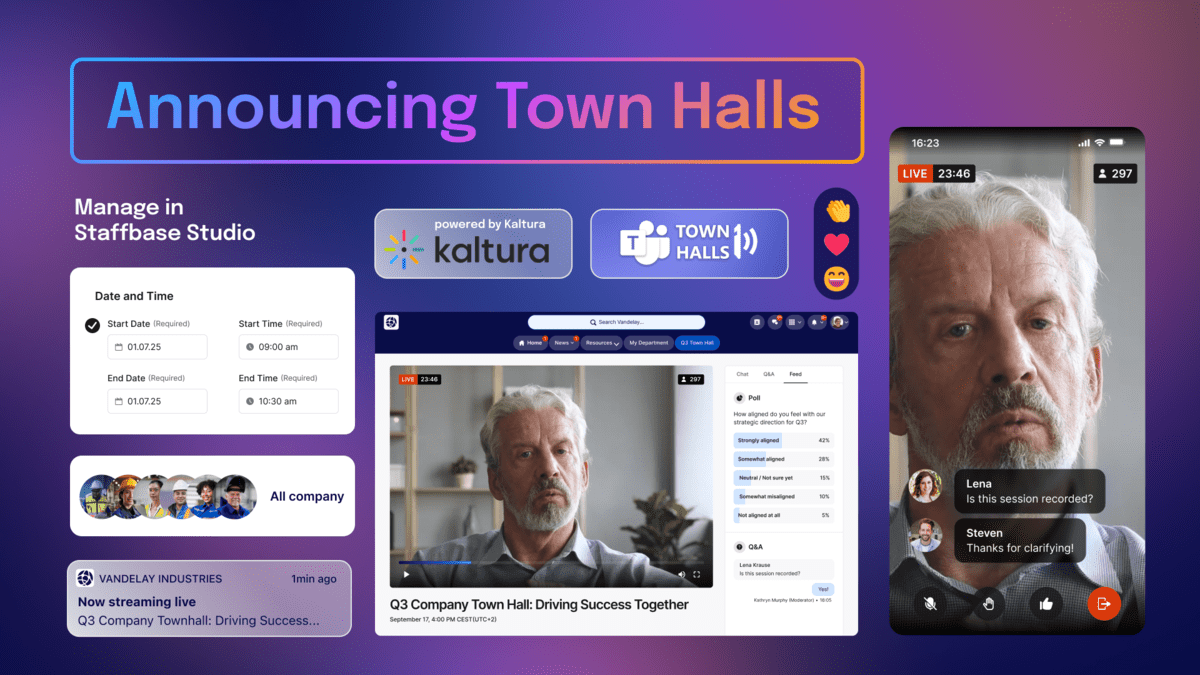
Activating the most trusted voices
Let’s return to the trust gap. We know that local leaders are the most trusted communicators — and the data supports it.
According to our 2025 Employee Communication Impact Study, 55% of employees say their immediate supervisor is their most trusted source of information.
And with platforms like Staffbase, those trusted messengers now have direct access to powerful communication tools.
But here’s the disconnect: they have the trust, they have the channels — but they’re not using them.
Our customer data shows that only 19% of leaders who have permission to post on the intranet are actually doing it.
That’s a massive missed opportunity. Because when organizations do activate their leaders, the results speak for themselves: Staffbase customers who empower local leader voices see up to 55% more engagement.
And what about inside our own walls? At Staffbase, teams with high engagement scores in our own platform have shown up to 82% lower employee turnover — a signal that engaged communication isn’t just good for connection, it’s good for retention.
So why aren’t more leaders communicating? Because it’s hard. Communicators are feeling the strain.
In our Staffbase Maturity Model, “enabling and involving others to communicate” was one of the most commonly reported capability gaps.
We want to make that easier to do with Staffbase for Leaders.
We want to address the need that companies and communicators have to inspire local leaders to lead better, through the power of great communication, and close the widening trust gap between employees and companies. Because activating leaders who are close to the context, language, and experience of employees is powerful.
Proximity is powerful.
Introducing Staffbase for Leaders
Local leaders are the most trusted voices in any organization — but they often lack the time, tools, or confidence to communicate regularly. Staffbase for Leaders helps bridge that gap with tailored support that motivates, aligns, and activates leadership communication at scale.
1. Motivate: the new email digest
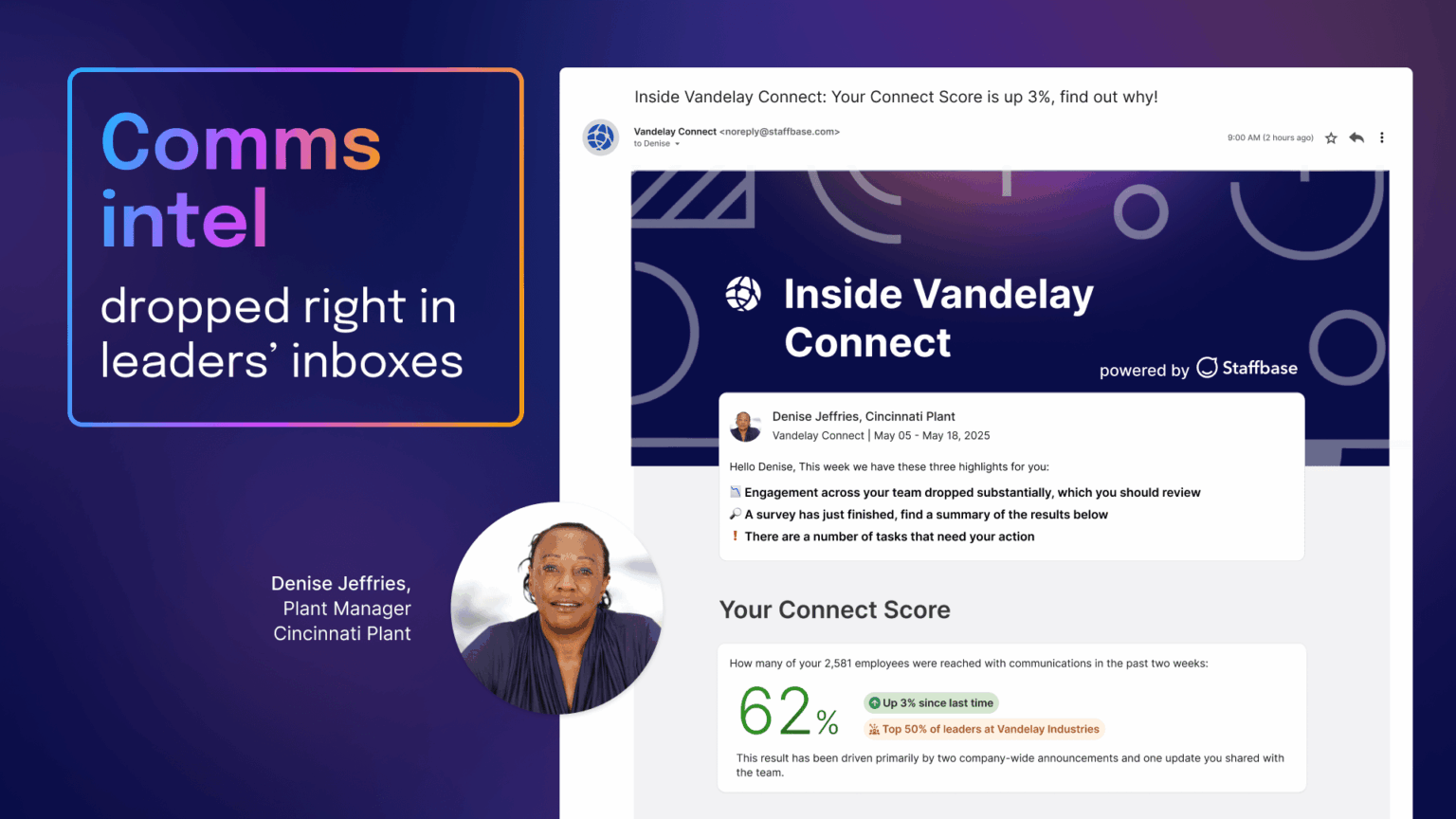
The new email digest helps leaders understand how effectively they’re reaching and engaging their teams — and gives them the confidence to do more.
Displays each leader’s Connect Score to show their reach and impact — including how their communication is trending over time and how it compares to peers across the organization
Offers insights into team sentiment, based on recent activity
Sends comment alerts so leaders never miss a moment to engage
Delivers AI-powered suggestions for next steps and improvements
2. Align: new Briefings in Mission Control
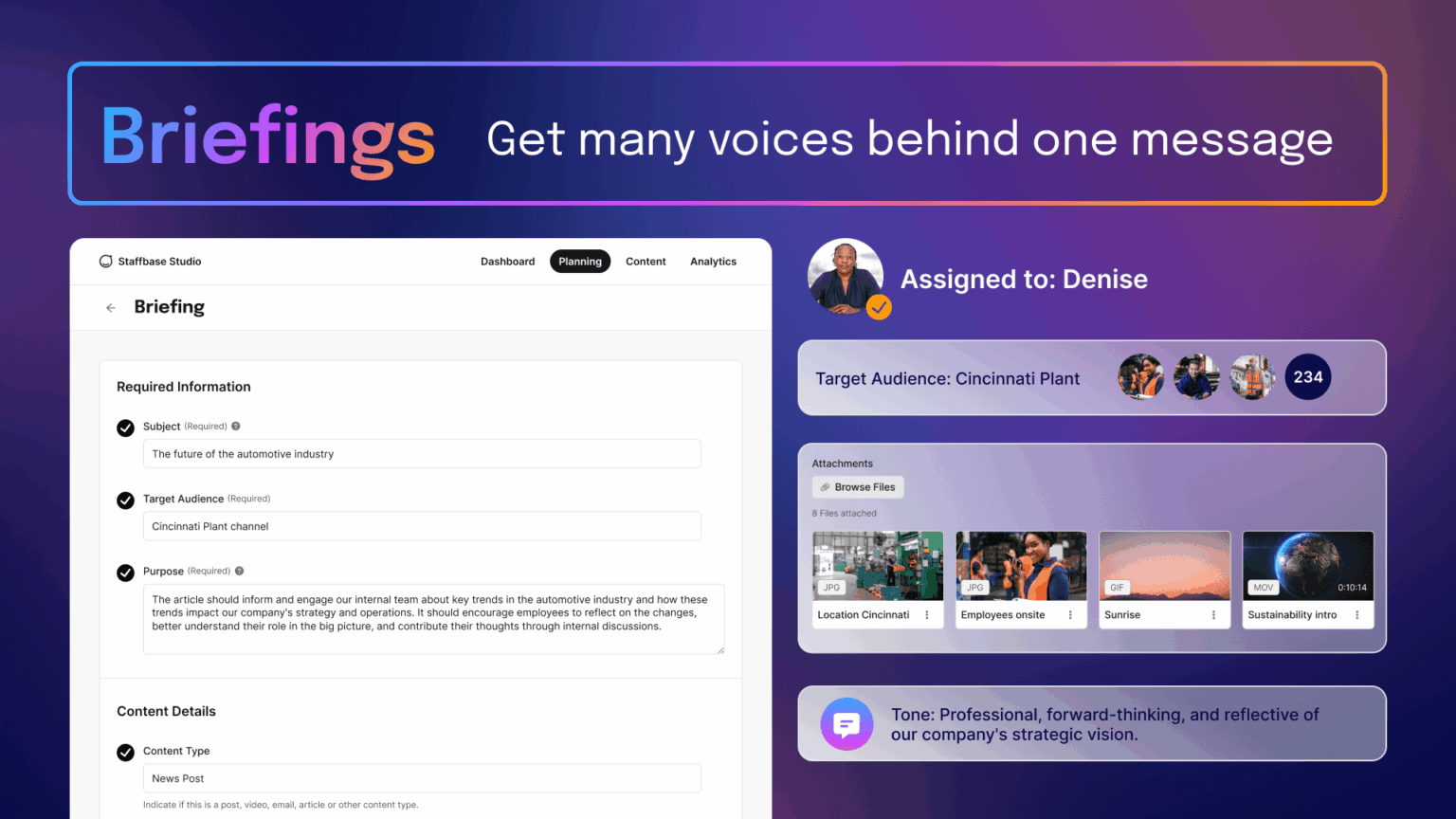
Briefings help communications teams keep leaders aligned on messaging and tone — especially during fast-moving changes or complex rollouts.
Provides key messages, media assets, and tone guidance in one clear view
Leaders are notified when they have a Briefing in their email inbox
Ensures consistent communication without overloading leaders
3. Activate: new Staffbase Shorts
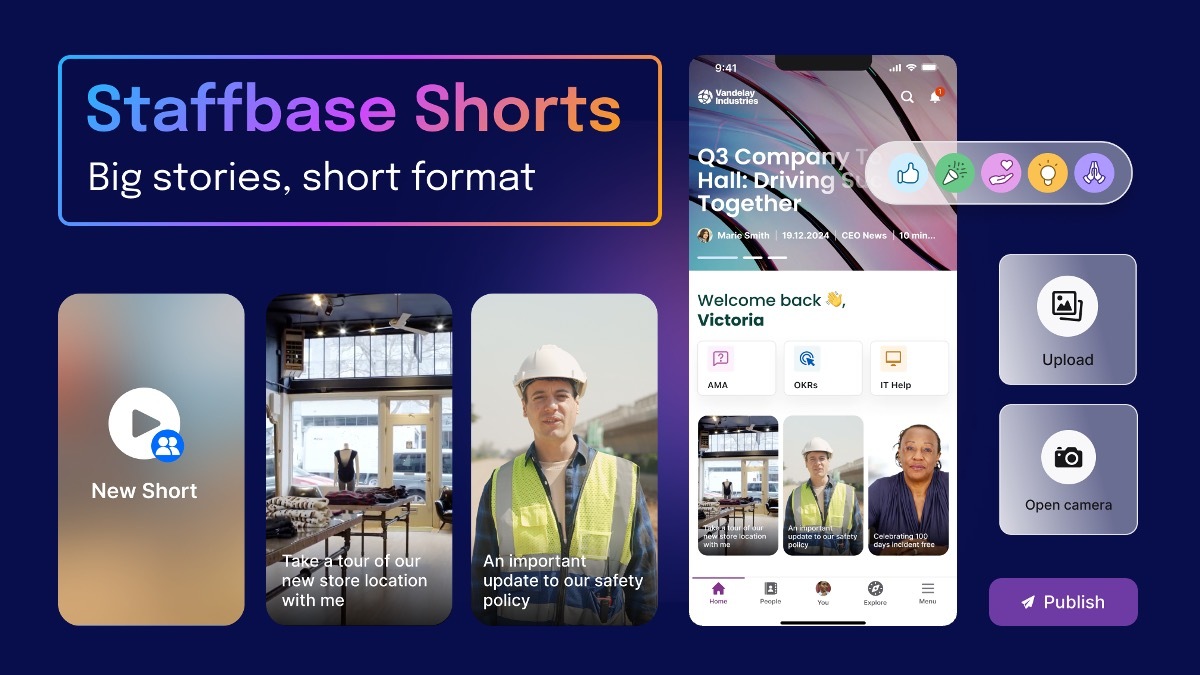
Staffbase Shorts makes it easy for leaders to connect with their teams through short-form, mobile-first video — no filming crew or editing skills needed. It’s designed for fast, authentic communication from the people employees know and trust most.
Designed for frontline communication — quick, on-the-ground, and real.
Examples include:
A plant manager celebrating 100 incident-free days
A regional manager taking employees on a tour of a new store opening
Fully governed, so leaders can share confidently within company standards
Delivered through the new Shorts widget — an intuitive, scrollable feed that makes it easy for employees to discover and engage with video updates, right inside the app or intranet
Trust starts here
We believe trust doesn’t scale from the top down. It scales through people — and through communicators who enable leaders at every level to show up, speak clearly, and build confidence in the path ahead. Through everyday leaders. Through great communication, delivered in close proximity.
With the new Staffbase Email, redesigned Employee App and Intranet, and the launch of Staffbase for Leaders, we’re giving you the tools to build a trusted communication brand that works at scale.
Let’s unleash inspiration everywhere.



